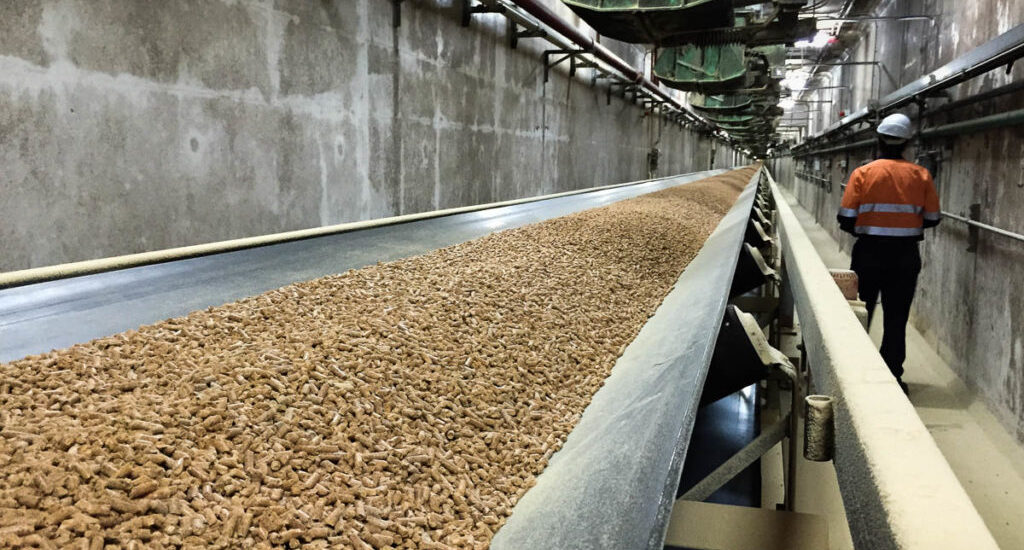Biomass fuel – Pellets
- 25/12/2024
- Posted by: Besim Islami
- Categories: Business plans, Economics, Energy efficiency, International, Sustainable Energy

Pellets are produced by compressing the wood material which has first passed through a hammer mill to provide a uniform dough-like mass. This mass is fed to a press, where it is squeezed through a die having holes of the size required, normally 6 mm diameter, sometimes 8 mm or larger. The high pressure of the press causes the temperature of the wood to increase greatly, and the lignin plasticizes slightly, forming a natural “glue” that holds the pellet together as it cools.
High-efficiency wood pellet stoves and boilers have been developed in recent years, typically offering combustion efficiencies of over 85%. The newest generation of wood pellet boilers can work in condensing mode and therefore achieve 12% higher efficiency values.
Wood pellet boilers have limited control over the rate and presence of combustion compared to liquid or gaseous-fired systems. For this reason, they are better suited for hydronic heating systems due to the hydronic system’s greater ability to store heat. Pellet burners capable of being retrofitted to oil-burning boilers are also available
- Air pollution emissions:
Emissions such as NOx, SOx and volatile organic compounds from pellet burning equipment are in general very low in comparison to other forms of combustion heating. A recognized problem is the emission of fine particulate matter to the air, especially in urban areas that have a high concentration of pellet heating systems or coal or oil heating systems in close proximity. This PM2.5 emissions of older pellet stoves and boilers can be problematic in close quarters, especially in comparison to natural gas (or renewable biogas), though on large installations electrostatic precipitators, cyclonic separators, or baghouse particle filters can control particulates when properly maintained and operated - Climate change aspect:
There is uncertainty to what degree making heat or electricity by burning wood pellets contributes to global climate change, as well as how the impact on climate compares to the impact of using competing sources of heat. Factors in the uncertainty include the wood source, carbon dioxide emissions from production and transport as well as from final combustion, and what time scale is appropriate for the consideration.
- Usage in Europe:
Usage across Europe varies due to government regulations. In the Netherlands, Belgium, and the UK, pellets are used mainly in large-scale power plants. The UK’s largest power plant, the Drax power station, converted some of its units to pellet burners starting in 2012; by 2015 Drax had made the UK the largest recipient of exports of wood pellets from the US. In Denmark and Sweden, pellets are used in large-scale power plants, medium-scale district heating systems, and small-scale residential heat. In Germany, Austria, Italy, and France, pellets are used mostly for small-scale residential and industrial hea - Energy output and efficiency:
High-efficiency wood pellet stoves and boilers have been developed in recent years, typically offering combustion efficiencies of over 85%. The newest generation of wood pellet boilers can work in condensing mode and therefore achieve 12% higher efficiency values
Leave a Reply Cancel reply
Contact us at the Consulting WP office nearest to you or submit a business inquiry online.


